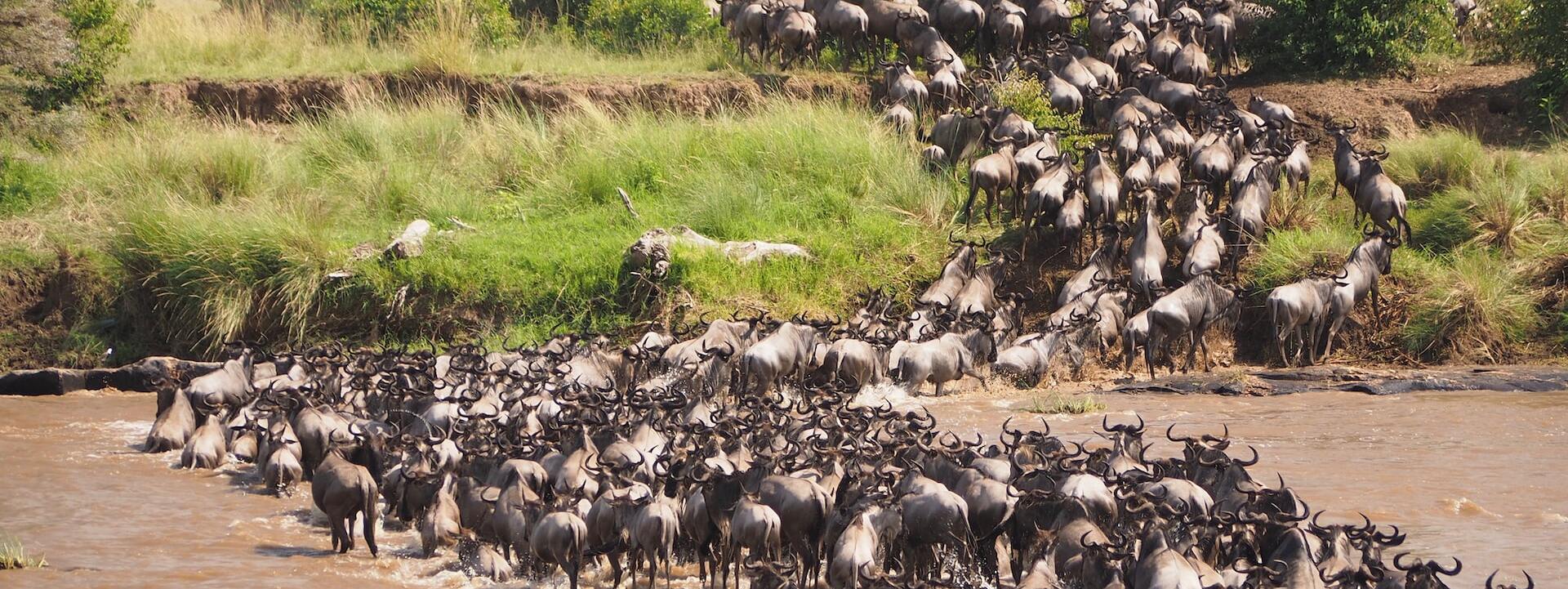Each year, one of the world's most awe-inspiring natural spectacles takes place in the heart of the Serengeti ecosystem in Tanzania. The wildebeest migration, often dubbed the "Greatest Wildlife Show on Earth," is a breathtaking phenomenon that captivates visitors from around the globe. In this article, we delve into the intricacies of this remarkable event, its significance, and the best ways to witness this awe-inspiring journey of survival.
The wildebeest migration is a cyclical journey undertaken by over 1.5 million wildebeest, along with hundreds of thousands of zebras, gazelles, and other herbivores. This epic migration is driven by the search for fresh grazing pastures and water sources as the seasons change. It is an extraordinary demonstration of instinct, survival, and the delicate balance of ecosystems.
The Migration Route
The migration in Serengeti follows a circular route that spans approximately 800 kilometers. It begins in the southern Serengeti, around December to March, with the wildebeest gathering on the lush grasslands to give birth to their young. This calving season attracts predators like lions, cheetahs, and hyenas, creating dramatic wildlife encounters.
As the dry season progresses, usually around May, the herds start their arduous journey towards the western corridor of the Serengeti, crossing the Grumeti River. This perilous river crossing is filled with crocodiles lying in wait, creating a spectacle of bravery and survival.
From June to July, the wildebeest continue their migration, crossing the treacherous Mara River and entering the Maasai Mara Reserve in Kenya. This northern phase of the migration offers unparalleled wildlife viewing opportunities, with predators trailing the herds as they graze on the lush grasses of the Mara.
As the dry season draws near, typically around October, the herds make their way back south to the Serengeti, completing the cycle of the migration. This journey is a true testament to the resilience and adaptability of these magnificent creatures.
Witnessing the Migration
To witness the wildebeest migration is a dream come true for wildlife enthusiasts and nature lovers. There are various ways to
experience this natural wonder:
Game Drives: Embark on guided game drives led by experienced safari guides who possess intimate knowledge of the migration patterns. They will take you to
strategic locations to witness river crossings and the abundance of wildlife that follows.
Balloon Safaris: Float above the Serengeti at sunrise on a hot air balloon safari, witnessing the vast herds from a unique perspective. The sweeping views and peacefulness of the balloon ride offer a truly magical experience.
Mobile Tented Camp: Stay in mobile tented camps strategically positioned along the migration route. These camps offer an authentic and immersive experience, placing you in the heart of the action as the herds pass by.
Preserving the Migration
The wildebeest migration is not only a remarkable natural phenomenon but also a fragile ecosystem that requires conservation efforts. Tanzania and Kenya, along with conservation organizations, are dedicated to preserving the Serengeti-Mara ecosystem, ensuring the protection of wildlife and maintaining the delicate balance for future generations.
The wildebeest migration in Serengeti is a testament to the grandeur and resilience of nature. It is a captivating journey that showcases the circle of life, the challenges of survival, and the interconnectedness of species. Witnessing this incredible spectacle is an experience that will forever leave a lasting impression, reminding us of the extraordinary wonders that exist in the natural world.








